Ice hockey is a game of two teams with six players that takes place on an ice rink. The aim is to advance a puck made of vulcanized rubber past a goal line and into an open goal post guarded by a goalie. Ice hockey has become one of the most popular sports globally and is an Olympic event, with more than a million registered players participating in leagues globally.

The goal of an ice hockey game
The primary objective when playing a hockey game is to score more goals than the opposition by putting the puck in their net. A goal is only scored when the entire puck crosses the goal line.
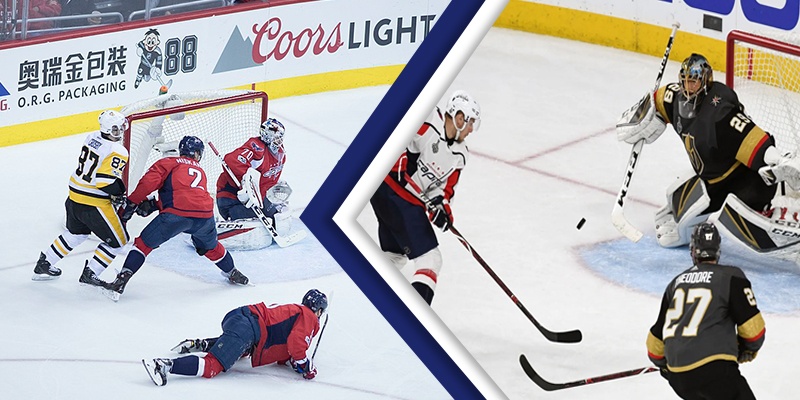
To score a goal, players must use their sticks to strike the puck when it makes contact with the ice. It’s against the rules to kick the puck across the line or volley it in. However, deflections from other players, including the goalie, are accepted as legitimate goals.
Players and equipment
The game is played on an ice hockey rink. A typical NHL rink measures 200 feet (61 meters) long by 85 feet (26 meters) wide and is designed like a round-cornered rectangle. International rinks are typically 200 feet by 100 feet, while college rinks in the US are often 184 to 200 feet by 85 to 98 feet. The goal cage measures 6 feet (1.8 meters) in width and 4 feet (1.2 meters) in height.
The hockey rink is divided into three main areas. The neutral zone, which is in the center, has a center circle where the games begin. Then there is the offensive zone, and defending zones on either side of the neutral zones, determined by the team with the puck at that time.
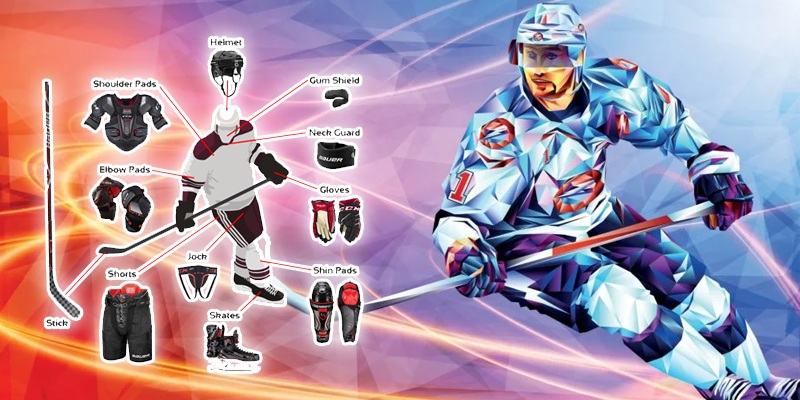
The three zones of the ice are separated by blue lines that are painted across the width of the ice, 60 feet (18 meters) from the goal line. The neutral zone is defined as the area lying between the blue line. There are also two end zone faceoff circles in each attacking and defending zone.
The game of ice hockey is played with a puck, which is a large, solid rubber item that weighs about 6 ounces. At no point can any player besides the goal tender handle the puck; it can only be hit by a player’s stick or foot.
Each player will be equipped with their own ice skates, hockey stick, and a variety of protective gear, such as a helmet, face mask, shoulder pads, padded shorts, arm guards, and gloves. Due to their frequent placement in the puck’s path, each goalie will have the same, on a much denser scale.
A maximum of twenty players are allowed on each team. Only six of these twenty players can be on the rink at a go. The remaining players can enter and exit the game as much as necessary and will be deployed as substitutes.
There are six starting players: a goaltender and five outfield players. Despite having a position assigned to them, the players can move about the ice as they like. This does not apply to the goaltender, who must stay inside their own half and not cross the center red line.
A breakdown of the basic ice hockey rules
Winning an ice hockey game
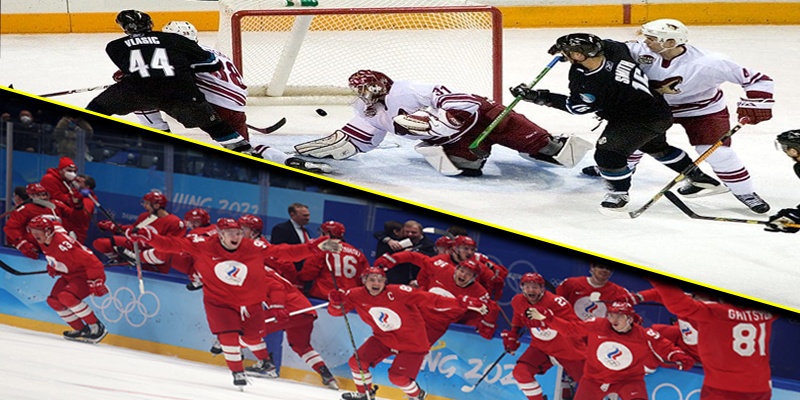
A team must outscore its opponents to win a game. In the event of a tie, the game advances to overtime, where one more quarter will be played until one of the teams scores. The team that scores first will win.
Scoring a goal
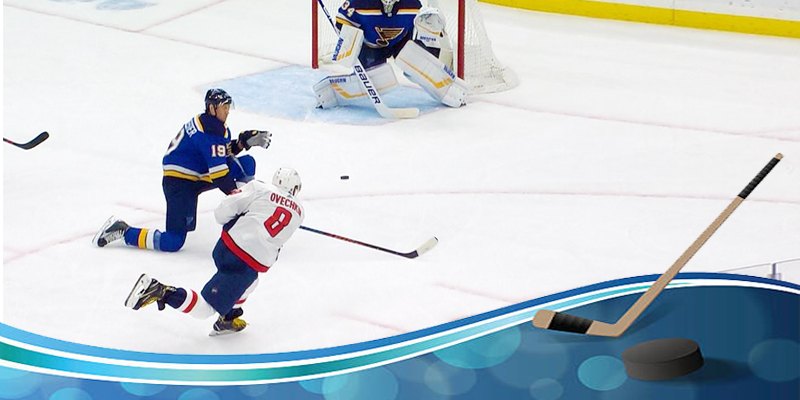
The puck must cross the goal line for a goal to be scored. Players are not allowed to use their hands, but they can use any other part of their body or stick. The entire puck must cross the line for a goal to be counted. The goal line in professional leagues like the NHL has a sensor running across it that shows when the puck has completely crossed the line
Ice hockey teams
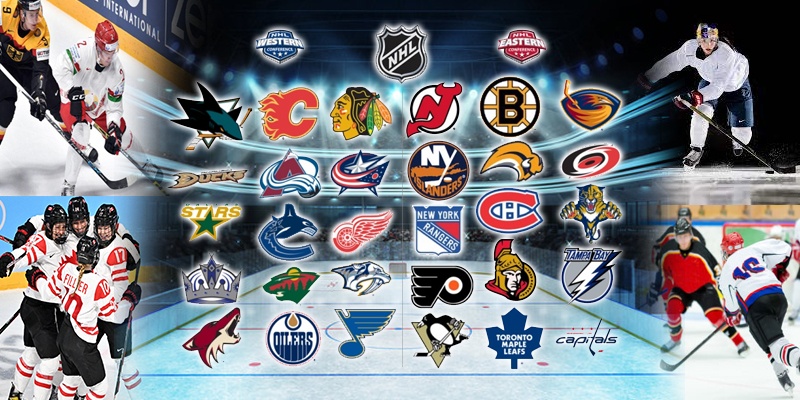
Twenty players, including two goaltenders, are the maximum allowed for each team, but only six of those players can be on the ice at once. Substitutions are permitted throughout the game,
Overtime
Any regular-season game that is tied at the end of regulation play will enter a five-minute sudden-death overtime period. A shootout will then take place if the score is still tied after the overtime period. The overtime period lasts for 20 minutes.
Shootouts
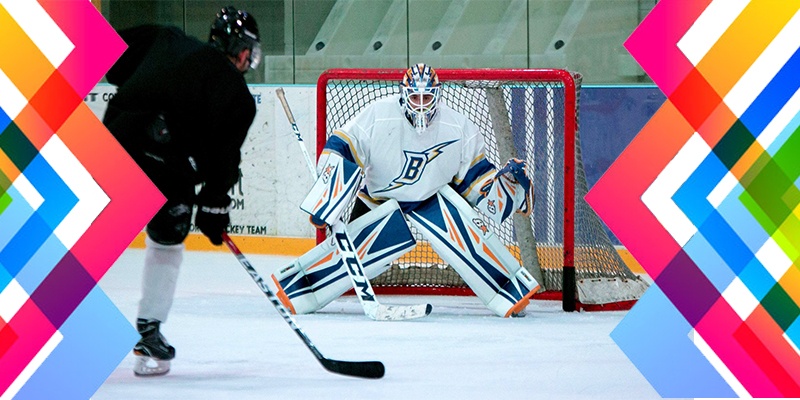
Every regular-season match that concludes overtime play tied will proceed to a shootout. A shootout is a round of penalty shots in which each team has three chances to score alternately. If the teams are still tied after three efforts, the shootout will continue until one side is unable to match the other’s attempt.
Penalties
At the officials’ discretion, player actions that go against the game’s rules may result in penalties. Penalties are divided into three groups: misconduct, major, and minor. Players who receive a minor penalty must spend two minutes in the penalty area while their side is down a player.
The other team gets a power play after a minor penalty that lasts two minutes. A minor penalty will end if the other side scores while the power play is in effect. Minor offenses include cutting, hooking, high sticking, boarding, tripping, charging, cross-checking, holding, roughing, interfering, and others.
Players who receive major penalties must spend five minutes in the penalty area, and they are only released at the conclusion of that period. The penalties for misconduct come in various sizes depending on the offense.
Offsides in Ice Hockey
Any attacking team member who advances the puck over the defensive team’s blueline is considered offside. The player’s skate position—not his stick position—determines the outcome. A player is deemed offside if both skates cross the blue line prior to the puck. The player is onside if he only has one skate on it and one over the blueline.
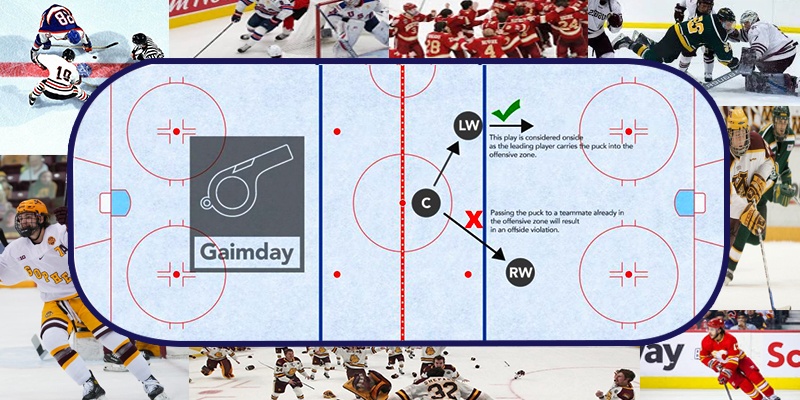
According to the offside rule, the puck must enter the zone before any offensive players do. Players cannot “cherry-pick” or wait close to the opposing team’s goal. Also, the offensive team as a whole must leave the offensive zone when the puck leaves it, enter the neutral zone, and remain there until the puck returns.
A recent regulation that has changed basic rules of ice hockey games is the coach’s right to challenge a play and have it reviewed for offside. In other words, if a team entered the zone offsides and later scored a goal, a coach can challenge and have the goal nullified. The team that requested the review will incur a two-minute game delay penalty if the officials review the play and rule it onside.
Faceoffs
Every game, quarter, and play starts with a faceoff. This happens when a referee places the puck between two rival players’ sticks. The battle for the puck then breaks out amongst the opposing players. The faceoff occurs at center ice at the start of each period, game, or goal.
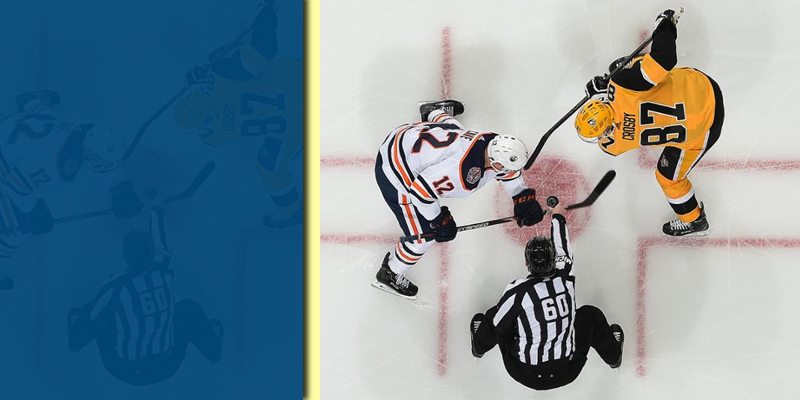
Each player assumes a specific position around one of the five faceoff circles on the ice during a faceoff, with only two players in the circle. The reason for the previous interruption in play establishes where the faceoff will take place.
Power plays
When a team has a numerical advantage on the ice while at least one opponent is serving a penalty in ice hockey, the team is considered to be on a power play. There is no power play when both teams have an equal number of players on the rink.
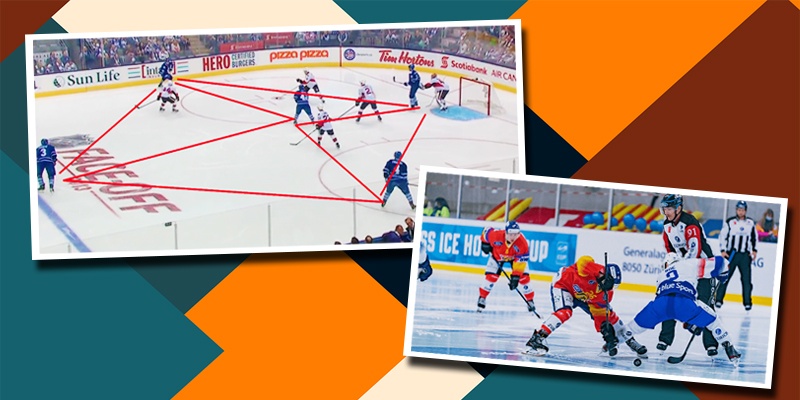
Delay of game
This is a penalty in hockey. It happens when the offending player is forced to sit out for two minutes as a result; following any of these actions.
- Intentionally moving the goal out of its usual position.
- Intentionally batting or shooting the puck outside the area of play
- Making an illegal substitution or failing to put the correct number of players on the ice after receiving a warning from an official
High-sticking while playing the puck
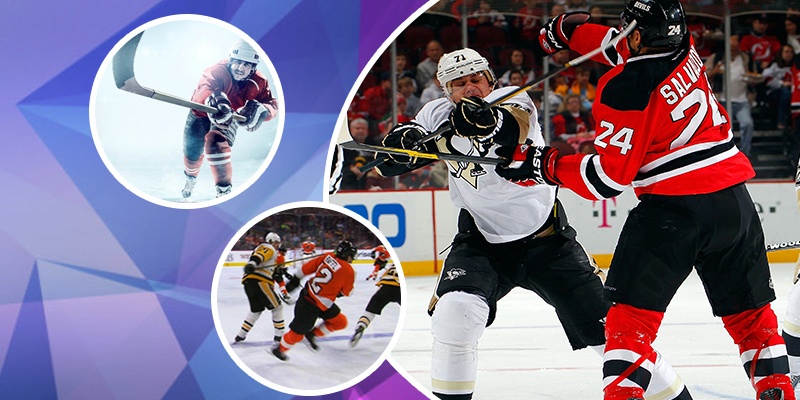
Play is stopped, and a faceoff starts when a rival bats a puck out of the air with a stick higher than shoulder height. A goal scored with a stick that made contact with the puck while it was above the goal’s crossbar is ruled invalid.
Closing hand on puck
Any player who catches a puck and is not the goaltender must immediately knock or set it back down on the ice. There will be a two-minute minor for any infraction of this.
Icing the puck
When a player from a team shoots the puck down the ice and passes the red goal line, it’s referred to as icing (instead of a goal). Icing the puck is not allowed when teams play at full strength or during a power play.
Whenever this happens, play is stopped, and the puck is sent back to the opposing end of the ice for a faceoff in the offensive team’s zone.
Pulling
Pulling the goalkeeper is a popular strategy in hockey. A goalie will be replaced as an additional attacker by a skater once a coach signals for him to walk to the bench. This leaves the goal undefended. Teams only use this in times of extreme need, such as when they are behind late in a game and need a goal to tie it. You have a better chance of scoring because there is an additional attacker in a 6v5 situation.
However, you don’t have a goaltender, and the opponent will almost certainly score any shot because you have an empty net. A team will typically pull their goalkeeper when there is a delayed penalty on the opposing side. In this circumstance, there is no risk in withdrawing your goalkeeper because the play will be called dead the next time the opponent touches the puck.
Line changes
Extreme endurance is required to compete at the best level in the difficult sport of hockey. In contrast to most sports, where players must be substituted during a break in play, hockey allows line changes to occur at any point throughout a play. This is referred to as substituting on the spot. When you start to feel fatigued during play, skate over to the bench so a teammate can take your place. The bench players must also pay attention to the action on the ice, so they are prepared to take the place of any teammates who want to switch.
High contact
If the puck is higher than your shoulders, you are not allowed to touch it with your stick when playing hockey. This is because it would be hazardous for players to swing their sticks above their heads while attempting to hit the puck. High touch is said to have occurred when a player’s stick touches the puck over their shoulders. There is no penalty; this simply ends the play, and a faceoff will follow.
Frequently Asked Questions About Hockey
How long does ice hockey take to play?
There are three total periods in a hockey game. While each period lasts for 20 minutes, it might extend due to play interruptions and penalties. After the three regulation periods, a five-minute overtime period will be played if the score is still tied. There are three quarters in lower-level competitions, but they are typically less than 20 minutes long.
What happens in the penalty box in hockey?
A player goes to the penalty area when they commit a penalty. When a player commits a penalty, the official directs them to the penalty box. The player must stay in the penalty area until the end of their penalty while their team plays with a man down. A player’s minor penalty is waived if the other team scores while that player is still in the penalty area.
How does fighting apply in hockey?
Hockey does permit fighting. Two players from opposing teams must drop their gloves before engaging in combat to show their intention to engage in combat. The referee gets closer to the battle to see it as the other players move away. The fighting will end when one or both players touch the ground if the referee decides it has gotten out of hand. A five-minute major penalty will be assessed to each participant in a melee.
What happens when the opposing team scores?
When the opposing team scores, the game is restarted, and the team with the highest number of goals wins the game.
